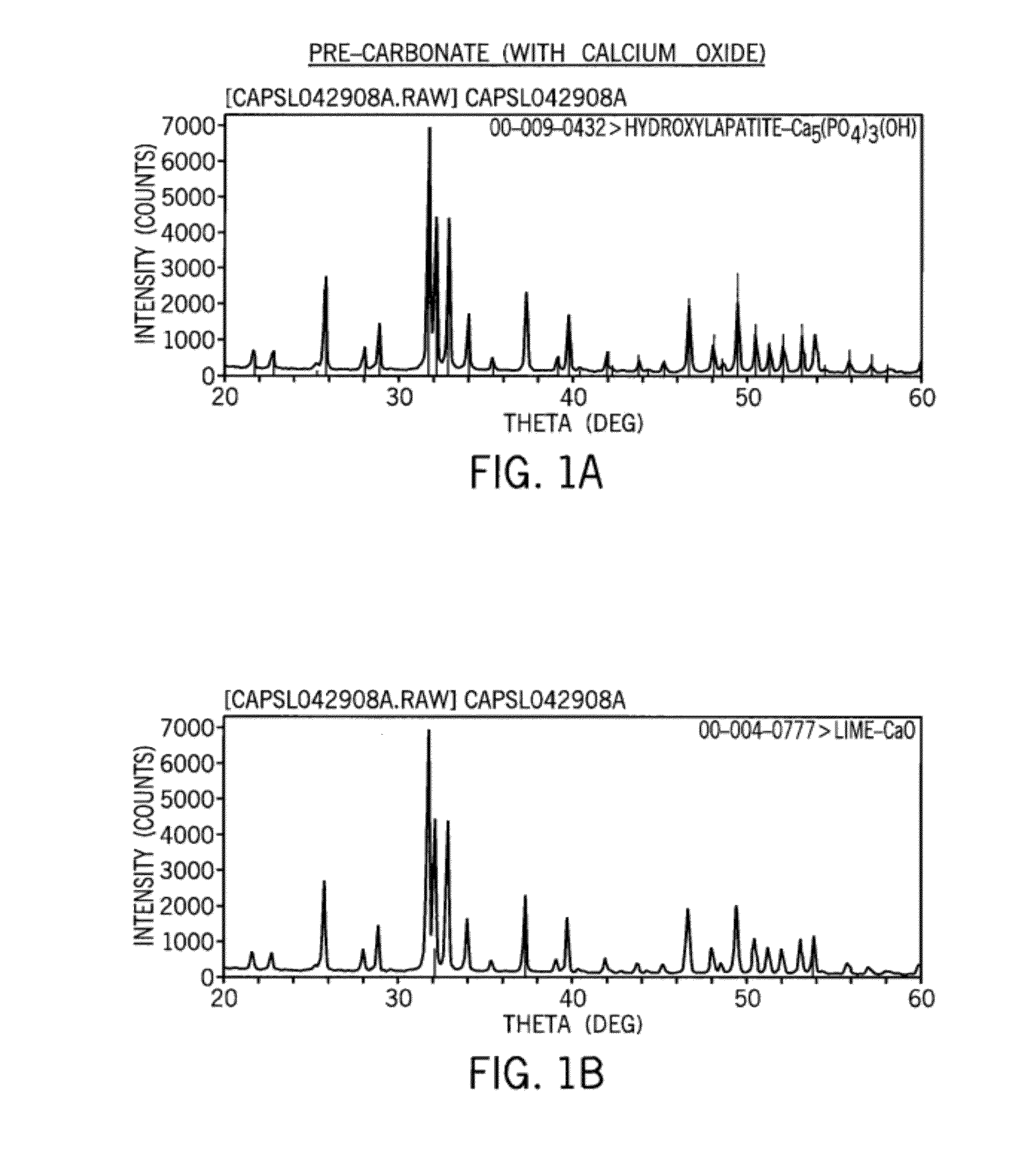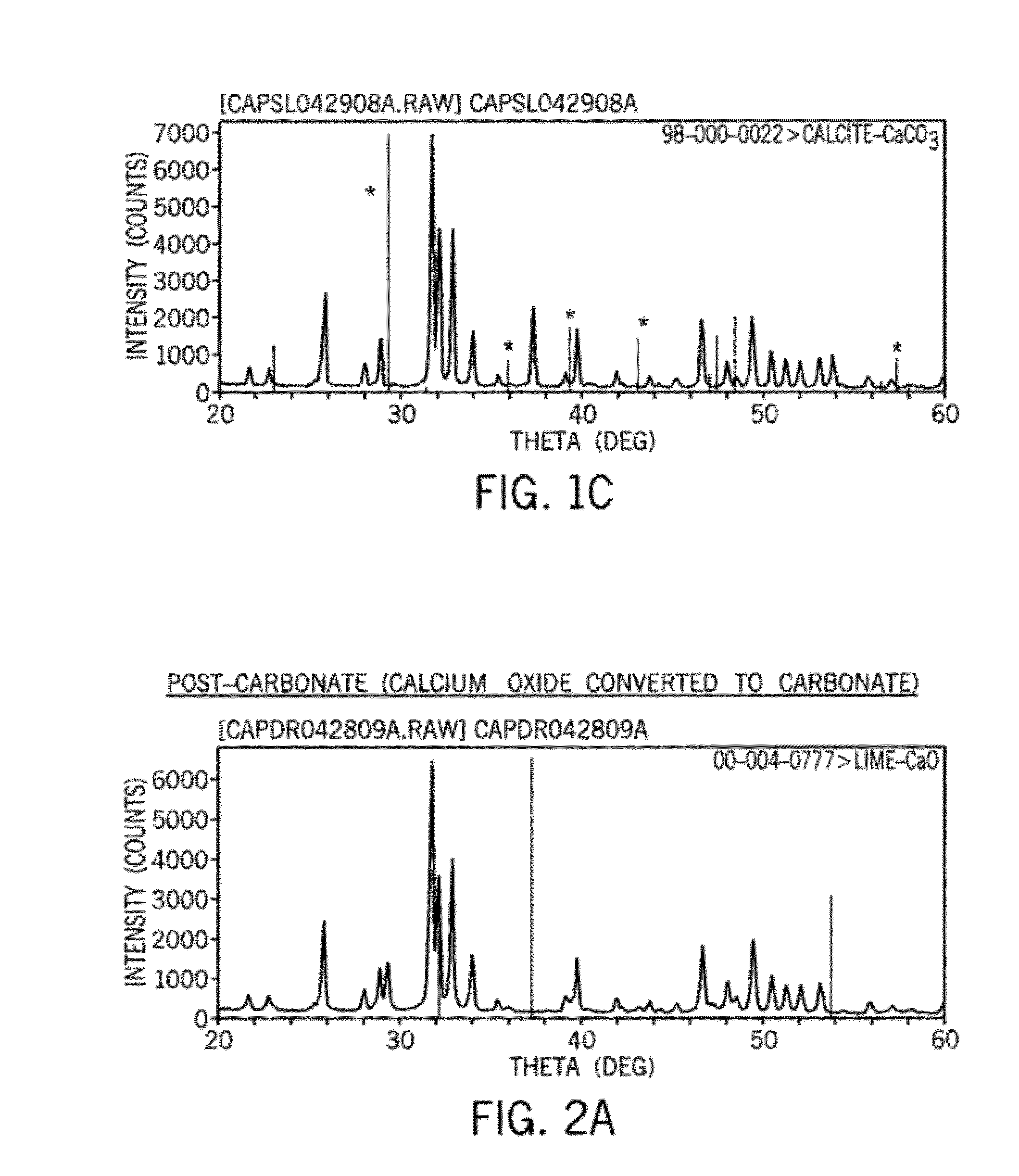Composites of hydroxyapatite and calcium carbonate and related methods of preparation and use
a technology which is applied in the field of compounds of hydroxyapatite and calcium carbonate and related methods of preparation and use, can solve the problems of calcium sulfate, resorb too quickly, and not as osteoconductive, and achieve the effect of enhancing the strength of carbonated hydroxyapatite and affecting the strength of a hydroxyapatite material
- Summary
- Abstract
- Description
- Claims
- Application Information
AI Technical Summary
Benefits of technology
Problems solved by technology
Method used
Image
Examples
example 1
[0041]Calcium hydroxide (4120 grams) was suspended in 40 liters of water in a 30-gallon plastic tank under continuous agitation. Phosphoric acid, 85% concentration, (3110 grams) was slowly added to the calcium hydroxide. This resulted in about a 21% excess of calcium hydroxide over that needed to make hydroxyapatite. After 24 hours, the reaction mixture was concentrated in a filter press. The filter cake was collected and dried in an oven at 120° C. The dried material was broken into random sized lumps and transferred to alumina crucibles, then sintered at 1100° C. for 4 hours (with an 8-hour heating ramp). After cooling, the sintered material was checked by x-ray diffraction and found to contain about 79% HA and 21% calcium oxide.
example 2
[0042]Some of the material (10 grams) from Example 1 was boiled in (300 ml) water for 3 hours to transform the calcium oxide to calcium hydroxide. The ratio of solids to water was about 1:30. XRD analysis of a sample confirmed the conversion of the calcium oxide to calcium hydroxide.
example 3
[0043]About 50 grams of the boiled material from Example 2 was transferred to boat crucibles and put into a tube furnace. The ends of the tube furnace were sealed except for a ¼ inch hole at the back end and a ¼ inch inlet pipe in the front end. A flow of about 6 cubic ft. / hour of CO2 was fed into the furnace through the tube and the furnace was held at 500° C. for 12 hours. XRD analysis of the treated material showed that all of the calcium oxide had transformed to calcium carbonate, while the HA was unchanged.
PUM
 Login to View More
Login to View More Abstract
Description
Claims
Application Information
 Login to View More
Login to View More - R&D
- Intellectual Property
- Life Sciences
- Materials
- Tech Scout
- Unparalleled Data Quality
- Higher Quality Content
- 60% Fewer Hallucinations
Browse by: Latest US Patents, China's latest patents, Technical Efficacy Thesaurus, Application Domain, Technology Topic, Popular Technical Reports.
© 2025 PatSnap. All rights reserved.Legal|Privacy policy|Modern Slavery Act Transparency Statement|Sitemap|About US| Contact US: help@patsnap.com



